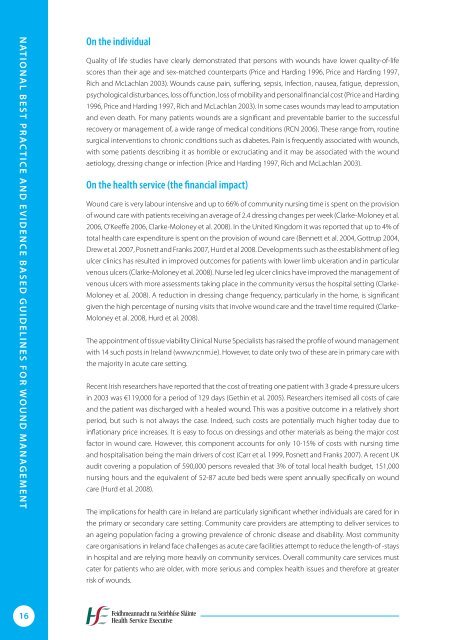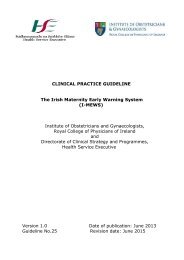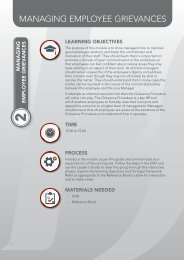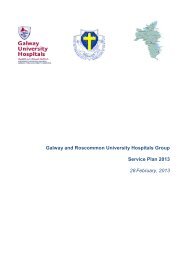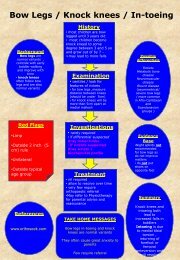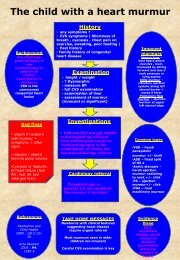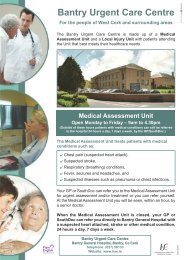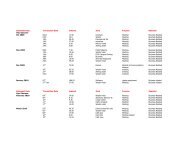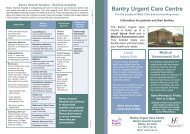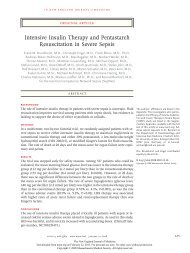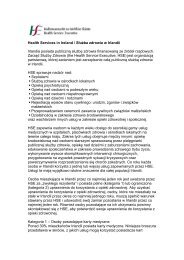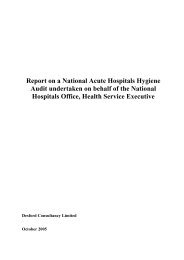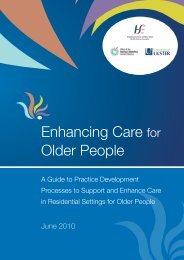National best practice and evidence based guidelines for wound ...
National best practice and evidence based guidelines for wound ...
National best practice and evidence based guidelines for wound ...
Create successful ePaper yourself
Turn your PDF publications into a flip-book with our unique Google optimized e-Paper software.
NatioNal <strong>best</strong> <strong>practice</strong> aNd evideNce <strong>based</strong> guideliNes <strong>for</strong> wouNd maNagemeNt<br />
16<br />
On the individual<br />
Quality of life studies have clearly demonstrated that persons with <strong>wound</strong>s have lower quality-of-life<br />
scores than their age <strong>and</strong> sex-matched counterparts (Price <strong>and</strong> Harding 1996, Price <strong>and</strong> Harding 1997,<br />
Rich <strong>and</strong> McLachlan 2003). Wounds cause pain, suffering, sepsis, infection, nausea, fatigue, depression,<br />
psychological disturbances, loss of function, loss of mobility <strong>and</strong> personal financial cost (Price <strong>and</strong> Harding<br />
1996, Price <strong>and</strong> Harding 1997, Rich <strong>and</strong> McLachlan 2003). In some cases <strong>wound</strong>s may lead to amputation<br />
<strong>and</strong> even death. For many patients <strong>wound</strong>s are a significant <strong>and</strong> preventable barrier to the successful<br />
recovery or management of, a wide range of medical conditions (RCN 2006). These range from, routine<br />
surgical interventions to chronic conditions such as diabetes. Pain is frequently associated with <strong>wound</strong>s,<br />
with some patients describing it as horrible or excruciating <strong>and</strong> it may be associated with the <strong>wound</strong><br />
aetiology, dressing change or infection (Price <strong>and</strong> Harding 1997, Rich <strong>and</strong> McLachlan 2003).<br />
On the health service (the financial impact)<br />
Wound care is very labour intensive <strong>and</strong> up to 66% of community nursing time is spent on the provision<br />
of <strong>wound</strong> care with patients receiving an average of 2.4 dressing changes per week (Clarke-Moloney et al.<br />
2006, O’Keeffe 2006, Clarke-Moloney et al. 2008). In the United Kingdom it was reported that up to 4% of<br />
total health care expenditure is spent on the provision of <strong>wound</strong> care (Bennett et al. 2004, Gottrup 2004,<br />
Drew et al. 2007, Posnett <strong>and</strong> Franks 2007, Hurd et al 2008. Developments such as the establishment of leg<br />
ulcer clinics has resulted in improved outcomes <strong>for</strong> patients with lower limb ulceration <strong>and</strong> in particular<br />
venous ulcers (Clarke-Moloney et al. 2008). Nurse led leg ulcer clinics have improved the management of<br />
venous ulcers with more assessments taking place in the community versus the hospital setting (Clarke-<br />
Moloney et al. 2008). A reduction in dressing change frequency, particularly in the home, is significant<br />
given the high percentage of nursing visits that involve <strong>wound</strong> care <strong>and</strong> the travel time required (Clarke-<br />
Moloney et al. 2008, Hurd et al. 2008).<br />
The appointment of tissue viability Clinical Nurse Specialists has raised the profile of <strong>wound</strong> management<br />
with 14 such posts in Irel<strong>and</strong> (www.ncnm.ie). However, to date only two of these are in primary care with<br />
the majority in acute care setting.<br />
Recent Irish researchers have reported that the cost of treating one patient with 3 grade 4 pressure ulcers<br />
in 2003 was €119,000 <strong>for</strong> a period of 129 days (Gethin et al. 2005). Researchers itemised all costs of care<br />
<strong>and</strong> the patient was discharged with a healed <strong>wound</strong>. This was a positive outcome in a relatively short<br />
period, but such is not always the case. Indeed, such costs are potentially much higher today due to<br />
inflationary price increases. It is easy to focus on dressings <strong>and</strong> other materials as being the major cost<br />
factor in <strong>wound</strong> care. However, this component accounts <strong>for</strong> only 10-15% of costs with nursing time<br />
<strong>and</strong> hospitalisation being the main drivers of cost (Carr et al. 1999, Posnett <strong>and</strong> Franks 2007). A recent UK<br />
audit covering a population of 590,000 persons revealed that 3% of total local health budget, 151,000<br />
nursing hours <strong>and</strong> the equivalent of 52-87 acute bed beds were spent annually specifically on <strong>wound</strong><br />
care (Hurd et al. 2008).<br />
The implications <strong>for</strong> health care in Irel<strong>and</strong> are particularly significant whether individuals are cared <strong>for</strong> in<br />
the primary or secondary care setting. Community care providers are attempting to deliver services to<br />
an ageing population facing a growing prevalence of chronic disease <strong>and</strong> disability. Most community<br />
care organisations in Irel<strong>and</strong> face challenges as acute care facilities attempt to reduce the length-of -stays<br />
in hospital <strong>and</strong> are relying more heavily on community services. Overall community care services must<br />
cater <strong>for</strong> patients who are older, with more serious <strong>and</strong> complex health issues <strong>and</strong> there<strong>for</strong>e at greater<br />
risk of <strong>wound</strong>s.


